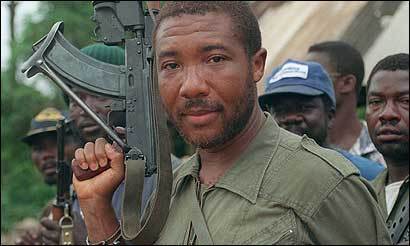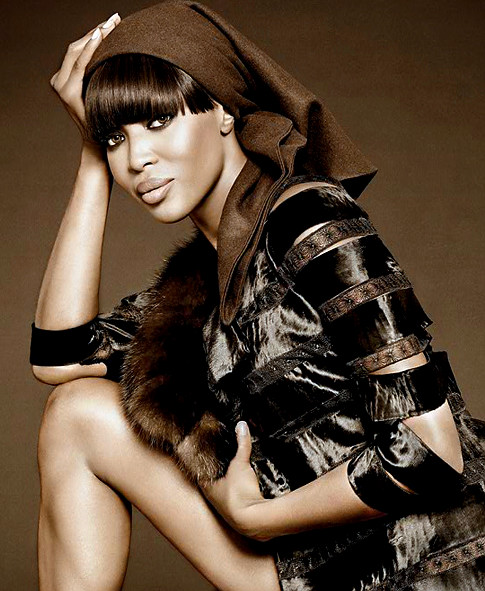
The recent upsurge of interest in the Charles Taylor trial, prompted by the appearance of a runway model, pointed towards one major – even if age old – fact, that the West has a very patronising view of Africa’s problems.
Though Charles Taylor faces 11 counts of war crimes and crimes against humanity at The Hague, and is the first African president ever to be tried by an international court, the court continues to ignore the fact that Charles Taylor is a product of the western influences that were the main beneficiaries of his activities in Liberia and Sierra Leone.
The trial is proving to be more than just the usual example of the unwieldiness of international justice. The Liberian civil war and eventually the larger regional war involving four neighbouring countries started on December 24, 1989 when Charles Taylor returned to Liberia, allegedly from Libya, at the head of the then notorious rebel faction, the National Patriotic Front of Liberia (NPFL).
Starting at a time when the west began shrugging of the need to render support to its cold war allies, the wars were mainly financed by commercial entities and transnational organized criminal networks, which provided weapons and a market for resources that sustained military campaigns conducted by both governments and rebel forces.
Exchanging weapons for timber, rubber and gold in Liberia and diamonds in Sierra Leone, these unscrupulous businesses gained from human conflict. Though the suggestion is of shady groups running around in conflict areas, cutting deals with both sides, the truth is less savoury, for involved were major corporations and some of the world's largest mineral extraction, oil and financial institutions who operate a “see no evil policy”.
Taylor, who became president in 2 August 1997, following a peace deal that ended the Liberian civil war, was at the middle of it all. It was during his term of office that he was first accused of war crimes and crimes against humanity because of his involvement in the Sierra Leone Civil War.
After opposition to his government led to another civil war in Liberia in 1999, international pressure forced him to step down and he went into exile in Nigeria in 2003 from where he was extradited in 2006 at the request of newly elected Liberian President Ellen Johnson Sirleaf to face trial in The Hague. Taylor is accused of war crimes stemming from his involvement in Sierra Leone's 1991-2002 civil war. Prosecutors say he supported the rebel armies Revolutionary United Front (RUF) and the Armed Forces Revolutionary Council (AFRC) by giving them weapons in exchange for rough diamonds, charges denied by Mr Taylor.
One question that resounds in the western media is the one that ponders what Charles Taylor, with his antecedents, was doing at a dinner hosted by a man of Nelson Mandela’s class. They fail to understand the peculiarities that surround the person of Charles Taylor – When the dinner was held; Charles Taylor had just assumed the presidency of Liberia, a position that was one of the clauses that ended the decade old Liberian civil war.
Charles Taylor was at the party because of the existing unspoken rule that allows a leader like him free reign until he leaves office. Charles Taylor was enjoying one of the perquisites that leadership of an African state bestows on even the worst leaders a state can throw-up.
Back in 2007, Charles Taylor was the known devil, one whose ascendance to power saved African governments – particularly Nigeria and other West African countries – money spent on peacekeeping missions. Though his antecedents was known by all the players, they were willing to turn the blind eye, at least for the while, even if that means the escalation of the situation in Sierra Leone where Charles Taylor has more than a transient interest.

Before the recent upsurge, caused by the appearance of supermodel Naomi Campbell and Mia Farrow, others have testified against the warlord turned president. People that had their limbs amputated, children who were turned into child soldiers or forced into sexual slavery by faction commanders and their fighters have all appeared before the tribunal, bearing tales that shocked as well as inspired. Constant in their accounts was the story of the involvement of the aforementioned opportunistic businessmen, outsiders who sought profit in diamonds, timber, rubber or weapons on the back of the war. However, the horrifying testimonies of the victims of Mr. Taylor’s alleged atrocities attracted marginal coverage in the Western media, until Ms Campbell’s subpoena.
Ms Campbell agreed that she met Charles Taylor at a 1997 dinner in South Africa but stressed that before then she has never heard of him, or of blood diamonds, or of "a country called Liberia.”, a situation that is true of many westerners.
The hope of prosecutors that Naomi Campbell’s appearance would throw further light on Taylor’s deals in conflict diamonds appeared to have come to naught, because, aside from the assumption that the diamonds might have come from Mr Taylor, the testimonies heard could only place Ms Campbell and Mr Taylor at the same dinner party. The testimonies of Mia Farrow and Carole White, no matter how much overblown by the western media, only further buttresses the fact that without documented evidence, the three year old case against Mr Charles Taylor might turn out to be a monumental waste of the $20 million so far spent.
About $100,000 is being spent on Mr. Taylor's defence each month, paid for by donations from western governments who effectively turned a blind eye while Taylor was committing the crimes he stands accused of today.
Human rights campaigners believe that Taylor’s trial would set an example for Africa and send a strong message to other tyrants and warlords that justice is waiting for them, but we hope that perhaps the tribunal would look beyond the diamonds and focus more on the atrocities. Perhaps it would look at the fates of two Nigerian journalists, Krees Imodibie of The Guardian and Tayo Awotusin from Daily Champion who were executed by Taylor’s troops, in August 1991 and avail their families and other victims of both Liberian civil wars and the conflict in Siearra Leone some form of compensation.
Another truth, hidden under the institutionalised ignorance to African affairs, is the fact that most Africans do not understand what the term blood diamond means. To the west, blood diamonds are those that are used to exchange for weapons that are used for conflicts. To the average African diamonds are novelties that very few people, aside from miners who are too poor to keep them, have held in their hand or have the resources to buy.
Perhaps, it is time to put the real beneficiaries of Africa’s war, international jewellers, miners and the fashion industry, the sources of the dollars that fuelled the wars, on the stand.
Perchance, this time, the prosecutors would look deeper at the circumstances surrounding Taylor’s ‘escape’ from a US jail on 15 September 1985. Taylor’s former associate, now Liberian senator, Prince Yomi Johnson claimed before the country's Truth and Reconciliation Commission on 27 August 2008 that the escape was orchestrated by the United States to engineer the overthrow of the Doe regime, a claim that has been echoed by Mr Taylor in his testimony at his trial in The Hague. Still, any news of US involvement in the wars of Liberia and Sierra Leone would not come as any surprise, at least not in West Africa, where the belief of Taylor being a US lackey has always existed.
Perhaps the court would subpoena American televangelist Pat Robertson who is alleged to have had business dealings with Charles Taylor and reportedly got diamond mining rights from the Warlord.
Perhaps when all these loopholes have been plugged, Africans will start believing the words of the West and maybe, African leaders would have reasons to fear the consequences of their actions.
As for the Taylor case, it transcends the model’s diamonds gift and butchered limbs.

No comments:
Post a Comment